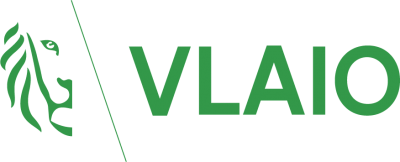Topics
We organise our actions in six thematic & strategic agendas:
Strategic Agendas:
Bio-economy
Circular Construction
Chemicals/Plastics
Manufacturing Industry
Food Chain
Water Cycles
Seven leverages provide additional support:
Leverage effects:
Lever Policy Instruments
Lever Circular Procurement
Lever Communication
Lever Innovation & Entrepreneurship
Lever Financing
Lever Jobs & Skills
Lever Research
What, why and how?
Why are we pursuing a circular economy?
Future visions 2050
How do we see our circular future?
About our management
Who steers what at Flanders Circular?
OSBS - Open Source Building System
An Open Source Building System of Cooperatively Managed Circular Building Elements for Better Livable Homes
The demand for housing is rising, but space is running out. Moreover, our current use of building materials has a major impact on the environment. The question arises: how can we live better with more people?
Labland vzw is a team of citizens, researchers and building professionals that tries to answer this question and looks for solutions to make living more ecological, more qualitative and more affordable. In collaboration with the Vrije Universiteit Brussel, Open Structures studio, Labeur, Wooncoop and the Erasmus University Rotterdam, we are experimenting with a new way of building: the Circular and Cooperative Open Building Method (COB). This is a modular construction model that allows homes to be built inexpensively and to be adapted to the changing living requirements of the residents, without wasting materials.
We also attach great importance to the cooperative aspect: building knowledge together so that contractors can work as a team, a cooperative, more efficient financial management and maintenance of homes, and so on.
We also work according to the principle of open source: all information on COB is freely available to everyone. The more people start working with it, the more knowledge is shared and the faster the building method can evolve and improve.
To inspire people and keep experimenting, we also developed a mobile demo house according to the principles of COB.
Labland vzw
Partners Wooncoop cvba, Nikolaj De Meulder (architect), Mathieu De Schryver (architect), VUB Architectural Engineering, Labeur vzw, OS_Studio, EURAC BV (Erasmus happiness Economics Research Organization)
Sectors
Themes
Organisations
Website
MOST IMPORTANT
RESULTS
- We designed the basis of a new construction method: the Circular and Cooperative Open Construction Method, which allows us to adapt homes to the changing needs and wishes of residents, without wasting materials.
- Following the principles of COB, we created a demo house from modular building elements with a fully adaptable interior: Studio16. In this way, we want to show residents, architects, building owners and local authorities the advantages of circular and cooperative building.
- Through a survey conducted during this project, we were able to demonstrate that people stay happier for longer in adaptable housing. This is a decisive argument to convince builders to choose COB and to build in a circular way.
- With this project, we were able to demonstrate that we can manufacture modular building components from demolition materials. For example, recycled wooden lattice beams were converted into wooden columns.
MOST IMPORTANT
LESSONS LEARNED
- Circular construction does not have to be difficult. It turns out to be quite simple to make a supporting structure to which we can attach facades, exterior joinery and interior fittings in a dismountable way. Prefabricated timber construction proved extremely suitable for this purpose.
- Building on a grid is possible with (automated) prefab timber construction, but in practice it is easier to work with reusable modular building elements than with a fixed grid.
- Collaborating with custom companies for the production of standard building components from demolition waste is a very interesting solution. It will be more difficult to get the building components to find their way to traditional building shops.
- Together with our sponsors, we find that many products already exist that can be used in a modular and disassembled way, from EPDM to heating. The biggest problem is that the (in)construction details are not well documented and communicated.
WHAT DOES
THE FUTURE HOLD?
We are going to tour Flanders with our mobile show house to introduce people to circular building principles and new forms of living. We also want to use the show house as an information stand at events to inspire people.
The COB will be the preferred construction method for our future building projects. It is, for example, an interesting construction method for our retractable houses (demolition and prefab replacement construction of terraced houses that cannot be renovated).
Furthermore, we want to continue sharing all our information about this project so that others can also start working with (parts of) COB. Currently, in cooperation with higher education, we are looking at how we can document COB as simply as possible. For example, there is still a lot of work to be done in the field of knowledge exchange about circular (in) building details between contractors, architects and building owners.
In addition, the customisation company Labeur vzw is going to further explore the production of standard components from recycled building materials.
Finally, we look forward to further research into the relationship between new circular forms of housing and residential satisfaction. We should not forget that the ultimate goal is qualitative living, not circular building per se.
















